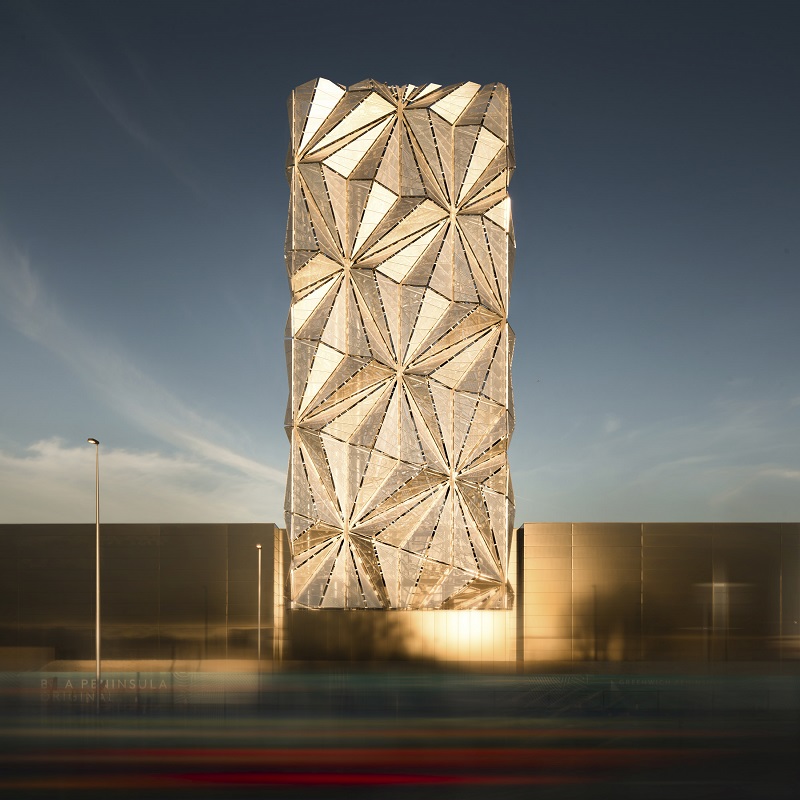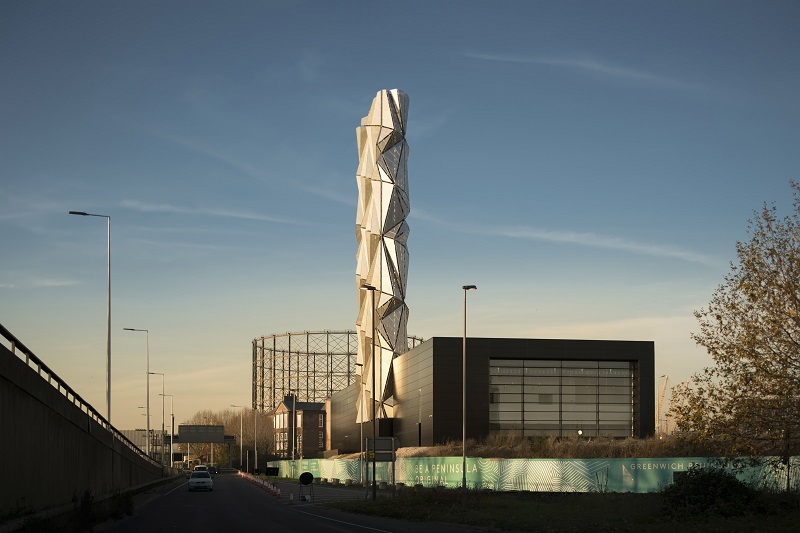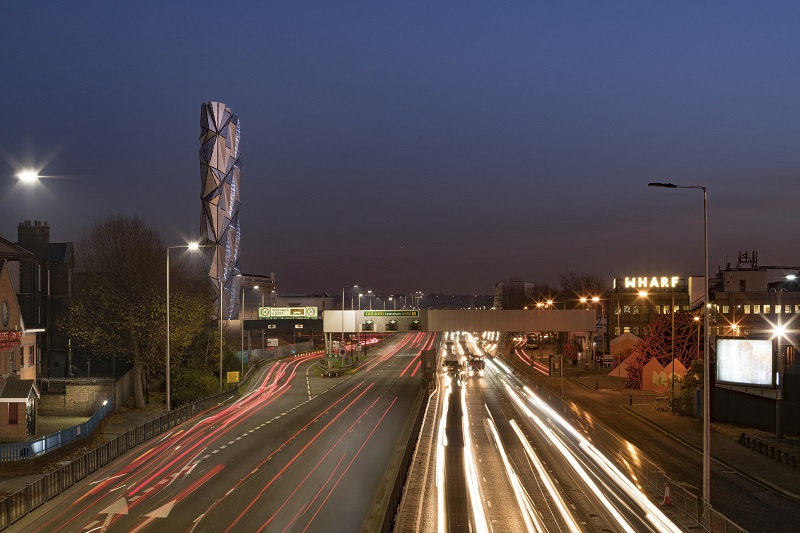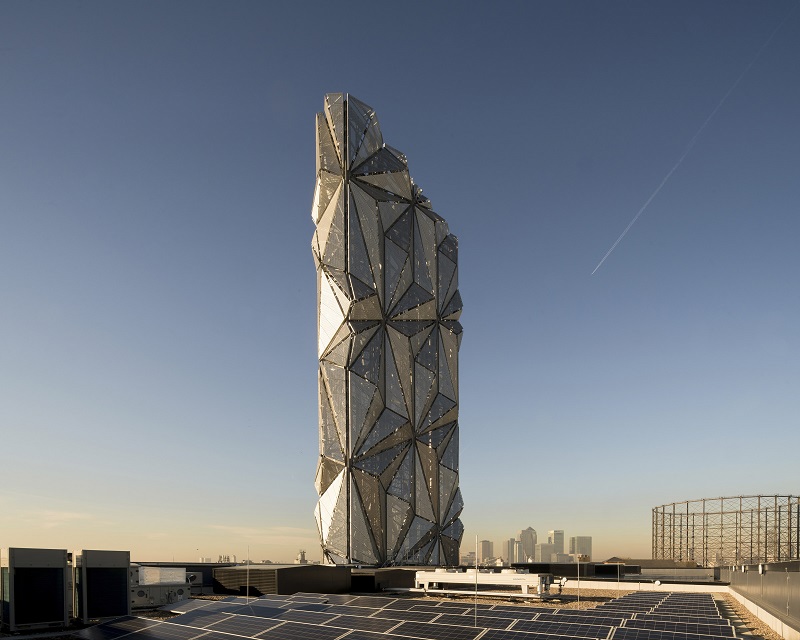Low Carbon Energy Centre, London
In March 2017, C.F. Møller Architects, artist Conrad Shawcross and developer Knight Dragon completed a major new art and architecture collaboration for London’s Greenwich Peninsula.
Measuring 3,000 sq. m, the Greenwich Peninsula Low Carbon Energy Centre is situated in a prominent location at the peninsula entrance, adjacent to the Blackwall Tunnel Approach, as a visible landmark for the area.
The Energy Centre houses advanced boilers and combined heat and power (CHP) that provides heat to the businesses and homes due to be built on the Peninsula in the coming years. The development was conceived in response to the political drive to increase the use of CHP and formed part of the Peninsula’s Sustainability Strategy.
The Energy Centre is the largest new build residential heat network in Europe, saving over 20,000 tonnes of carbon a year. Heat energy will be distributed via a District Heating Network (DHN) from the Energy Centre to each plot across the development.
Designed by British artist Conrad Shawcross, the cladding of the 49 m-high stack tower unites sophisticated engineering and complex optic research to create an impressive sculptural concept on a huge scale.
The structure’s cladding is formed from hundreds of triangular panels that fold and flow across the surface of the tower forming complex geometric patterns that visually break up the flat planes to create an uneven, sculpted surface that plays with the vanishing points and perspective.
The panels are perforated so as to exploit the phenomena of the Moiré Effect, and at night an integrated lighting design produces a shifting series of ‘compositions‘ lit from within the structure.
The work of art by Conrad Shawcross is named ‘The Optic Cloak*
The Energy Centre’s machine room and flexible ancillary office accommodation is supplemented with a Visitor Centre offering an interactive educational experience for prearranged groups.
Content and images courtesy of C.F. Møller Architects.
Photography © Mark Hadden.
[edit] Find out more
[edit] Related articles on Designing Buildings Wiki
Featured articles and news
Latest Build UK Building Safety Regime explainer published
Key elements in one short, now updated document.
UKGBC launch the UK Climate Resilience Roadmap
First guidance of its kind on direct climate impacts for the built environment and how it can adapt.
CLC Health, Safety and Wellbeing Strategy 2025
Launched by the Minister for Industry to look at fatalities on site, improving mental health and other issues.
One of the most impressive Victorian architects. Book review.
Common Assessment Standard now with building safety
New CAS update now includes mandatory building safety questions.
RTPI leader to become new CIOB Chief Executive Officer
Dr Victoria Hills MRTPI, FICE to take over after Caroline Gumble’s departure.
Social and affordable housing, a long term plan for delivery
The “Delivering a Decade of Renewal for Social and Affordable Housing” strategy sets out future path.
A change to adoptive architecture
Effects of global weather warming on architectural detailing, material choice and human interaction.
The proposed publicly owned and backed subsidiary of Homes England, to facilitate new homes.
How big is the problem and what can we do to mitigate the effects?
Overheating guidance and tools for building designers
A number of cool guides to help with the heat.
The UK's Modern Industrial Strategy: A 10 year plan
Previous consultation criticism, current key elements and general support with some persisting reservations.
Building Safety Regulator reforms
New roles, new staff and a new fast track service pave the way for a single construction regulator.
Architectural Technologist CPDs and Communications
CIAT CPD… and how you can do it!
Cooling centres and cool spaces
Managing extreme heat in cities by directing the public to places for heat stress relief and water sources.
Winter gardens: A brief history and warm variations
Extending the season with glass in different forms and terms.
Restoring Great Yarmouth's Winter Gardens
Transforming one of the least sustainable constructions imaginable.


























